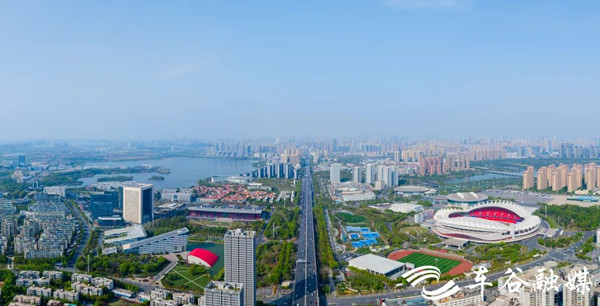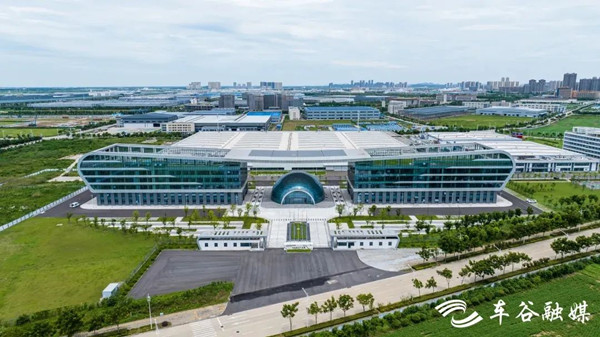

A bird's-eye view of WEDZ. [Photo/WeChat account: whkfq]
Wuhan Economic & Technological Development Zone (WEDZ) has been capitalizing on the automotive industry's transition to electrification and intelligence, enhancing its industrial landscape.
This strategic shift has allowed WEDZ to evolve from a single-industry focus into a diversified, high-value-added industrial ecosystem.
Last year, WEDZ's tertiary sector accounted for 42 percent of its GDP, up from 34.8 percent in 2021, while the industrial sector's share decreased to 47.9 percent. The contribution of high-tech industries rose to 46 percent of GDP. This year, WEDZ has attracted 52 major projects, 29 of which are non-automotive in nature.

Wuhan Intelligent Automotive Software Park in WEDZ. [Photo/WeChat account: whkfq]
WEDZ is currently home to seven major new energy vehicle factories, offering a wide range of mainstream to luxury products. The zone has also prioritized automotive components, attracting over 100 core component companies, including industry leaders like CATL and ZF.
WEDZ is developing a highly efficient "vehicle-energy-software-chip-material" ecosystem for the automotive industry. Key industrial parks include Wuhan Intelligent Automotive Software Park, Wuhan Hydrogen Energy Technology Industrial Park, New Materials Industrial Park, and AI Industrial Park.
WEDZ is nurturing strategic emerging industries such as the low-altitude economy and biopharmaceuticals, positioning itself for future growth. It is also focusing on developing production services, digital empowerment, software R&D, testing and inspection, finance, and pilot testing.

Wuhan Low-altitude Industrial Park in WEDZ. [Photo/WeChat account: whkfq]